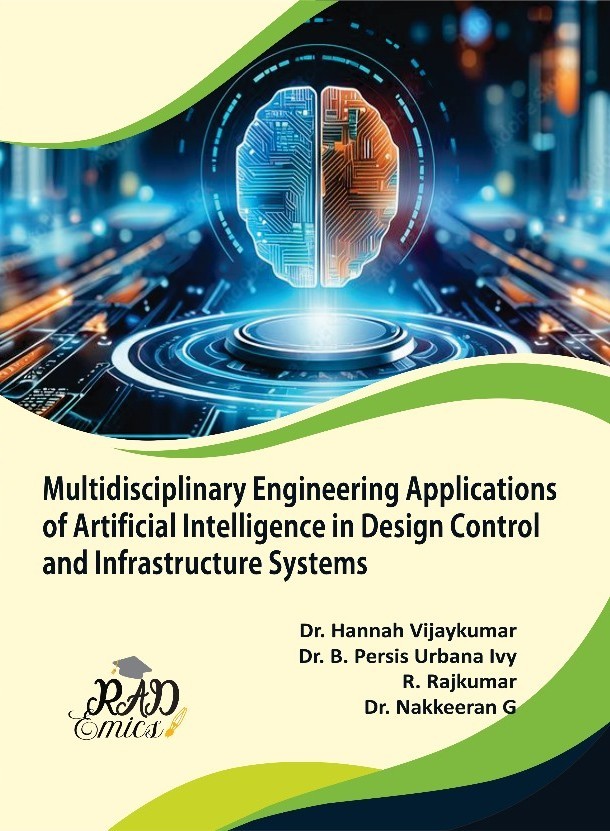
Peer Reviewed Chapter
Chapter Name : Deep Learning Based Process Optimization in Additive Manufacturing and Metal Forming Operations
Author Name : Anish Thomas, Rajkumar Ramasamy, Mohite Madhavi Abhijit
Copyright: ©2025 | Pages: 34
DOI: 10.71443/9789349552609-02
Received: 01/04/2025 Accepted: 22/05/2025 Published: 06/09/2025
Abstract
The integration of Artificial Intelligence (AI) in manufacturing processes, particularly in additive manufacturing (AM) and metal forming, is reshaping the landscape of modern industrial production. This chapter explores the application of deep learning, adaptive control systems, and feedback loops to optimize process parameters, enhance material utilization, and ensure product quality. Additive manufacturing, with its ability to produce complex geometries and reduce material waste, benefits significantly from real-time process monitoring and control, enabling high precision and customization. In metal forming operations, adaptive systems allow for continuous adjustments in response to real-time feedback, improving efficiency and minimizing defects. The chapter also delves into the environmental impact and sustainability challenges of both technologies, highlighting the potential for reducing energy consumption and material waste. The synergy between AI-driven solutions and traditional manufacturing methods promises a future where enhanced automation, improved process stability, and sustainable practices are the norm. Key challenges, including data quality, system integration, and scalability, are also addressed, offering insights into the future direction of AI in manufacturing. This chapter provides a comprehensive overview of the transformative potential of AI in optimizing manufacturing operations, with a focus on process control, material sustainability, and technological advancements.
Introduction
The rapid advancement of Artificial Intelligence (AI) has heralded a new era in manufacturing, particularly within the realms of additive manufacturing (AM) and metal forming operations [1]. These two pivotal technologies, which have traditionally relied on manual processes and basic automation, are undergoing significant transformations with the incorporation of AI-driven methodologies [2]. Additive manufacturing, also known as 3D printing, enables the creation of highly complex geometries that are both lightweight and efficient, while simultaneously reducing material waste [3]. Metal forming, on the other hand, continues to be essential for large-scale industrial applications where high strength and durability are paramount [4]. The integration of AI in these manufacturing techniques offers unparalleled benefits, such as optimizing material usage, improving product quality, enhancing process control, and enabling faster production times. This introduction sets the foundation for understanding how AI is revolutionizing these manufacturing processes and explores its impact on operational efficiency, sustainability, and overall product innovation [5].
Additive manufacturing has been particularly transformative in industries such as aerospace, automotive, and healthcare, where the demand for highly customized parts is growing rapidly [6]. In contrast to traditional subtractive manufacturing techniques, which involve cutting away material from a larger block, additive manufacturing builds parts layer by layer, significantly reducing material waste [7]. AI, through machine learning algorithms and deep learning models, is being utilized to predict optimal design parameters, monitor material deposition, and identify potential defects in real-time [8]. The ability to make on-the-fly adjustments to the manufacturing process based on this predictive intelligence has the potential to greatly enhance the precision and reliability of AM-produced parts [9]. This approach is particularly advantageous for complex and intricate designs, such as those needed in medical implants or turbine blades, where traditional manufacturing methods often fall short [10].
In metal forming, which encompasses processes such as casting, forging, and stamping, the integration of AI has enhanced the ability to monitor and control variables such as temperature, pressure, and material flow during production [11]. These operations are typically characterized by high pressures and temperatures, which can cause significant variations in material properties [12]. By incorporating AI-driven feedback loops, manufacturers are now able to continuously monitor these variables in real time and make necessary adjustments to optimize the process [13]. Adaptive control systems, a crucial component of AI technology, allow for dynamic adjustments based on the feedback received, which helps to prevent defects such as cracks, warping, or insufficient bonding [14]. These innovations in process control have improved not only the quality of the final product but also the overall efficiency of the manufacturing process, reducing the need for costly rework and minimizing material waste [15].